Bank for International Settlements
The Bank for International Settlements (BIS, German: Bank für Internationalen Zahlungsausgleich, French: Banque des règlements internationaux, Italian: Banca dei regolamenti internazionali) is an international financial institution which is owned by member central banks.[2] Its primary goal is to foster international monetary and financial cooperation while serving as a bank for central banks.[3]
 | |
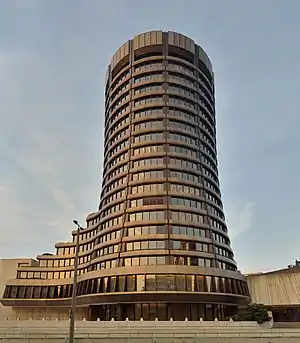 BIS tower in Basel | |
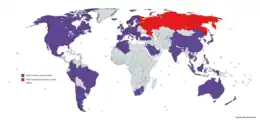 BIS members | |
| Established | 17 May 1930 |
|---|---|
| Type | International financial institution |
| Purpose | Central bank cooperation |
| Location |
|
| Coordinates | 47°32′53″N 7°35′31″E |
Membership | Central banks from 63 jurisdictions |
| Agustín Carstens | |
Main organ | Board of directors[1] |
Staff | 1300 |
| Website | www |
The BIS Innovation Hub (BISIH), launched in 2019, extends the BIS mission of collaboration through digital innovation, developing technology-based public goods to support central banks and enhance the functioning of the financial system.[4][5]
The BIS carries out its work through its meetings, programmes and through the Basel Process, hosting international groups pursuing global financial stability and facilitating their interaction. It also provides banking services, but only to central banks and other international organizations.
The BIS is based in Basel, Switzerland, with representative offices in Hong Kong and Mexico City.
History
Interwar beginnings
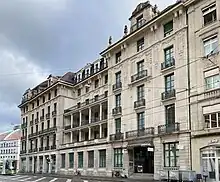
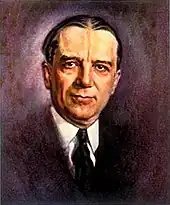
The BIS was created by Montagu Norman in the context of the Young Plan, on the initiative of a group of American bankers including Owen D. Young, J. P. Morgan Jr., Thomas W. Lamont, S. Parker Gilbert, and Jackson Reynolds, with further elaboration in the spring of 1929 by Owen Young with input from Shepard Morgan, Warren Randolph Burgess, Walter W. Stewart as well as Belgian official Émile Francqui and German central banker Hjalmar Schacht. Political positions within the Herbert Hoover administration made it impossible for U.S. Federal Reserve System officials to participate directly in the initiative, but the U.S. was still able to retain the roles of BIS chairman and president (held by private bankers in liaison with the Federal Reserve) during the bank's first half-decade of operation.[6]
The BIS's original role was thus to facilitate reparations imposed on Germany by the Treaty of Versailles after World War I, and to act as the trustee for the German Government International Loan (Young Loan) that was floated in 1930.[7] The need to establish a dedicated institution for this purpose was suggested in 1929 by the Young Committee, and was agreed to in August of that year at a conference at The Hague. The charter for the bank was drafted at the International Bankers Conference at Baden-Baden in November. The founding texts of the BIS were subsequently signed in The Hague on 20 January 1930: a convention (namely an intergovernmental agreement) between Germany, Belgium, France, the United Kingdom, Italy, Japan, the United States, and Switzerland, establishing the bank's special status on Swiss soil;[8] and a Constituent Charter for the bank, signed by the National Bank of Belgium, Bank of France, Reichsbank, Bank of England, Bank of Italy, Bank of Japan, and a group of U.S. banks formed by J.P. Morgan & Co., the First National Bank of New York, and the First National Bank of Chicago. The BIS promptly opened its doors in Basel on 17 May 1930.[9] According to the charter, shares in the bank could be held by individuals and non-governmental entities. However, the rights of voting and representation at the Bank's General Meeting were to be exercised exclusively by the central banks of the countries in which shares had been issued. It also enjoyed certain immunities in the contracting states (Brussels Protocol 1936).[10]
The BIS's original task of facilitating World War I reparation payments quickly became obsolete. Reparation payments were first suspended (Hoover moratorium, June 1931) and then abolished altogether (Lausanne Agreement, July 1932). Instead, the BIS focused on its second statutory task, i.e. fostering the cooperation between its member central banks. It acted as a meeting forum for central banks and provided banking facilities to them. For instance, in the late 1930s, the BIS was instrumental in helping continental European central banks ship out part of their gold reserves to London.[11]
As a purportedly apolitical organization, the BIS was unable to prevent transactions that reflected contemporaneous geopolitical realities, but were also widely regarded as unconscionable. As a result of the policy of appeasement of Nazi Germany by the UK and France, in March 1939, the BIS was obliged to transfer 23 tons of gold it held, on behalf of Czechoslovakia, to the German Reichsbank, following the German annexation of Czechoslovakia.[12]
World War II
At the outbreak of World War II in September 1939, the BIS Board of Directors – on which the main European central banks were represented – decided that the Bank should remain open, but that, for the duration of hostilities, no meetings of the Board of Directors were to take place and that the Bank should maintain a neutral stance in the conduct of its business. However, as the war dragged on evidence mounted that the BIS conducted operations that were helpful to the Germans. Also, throughout the war, the Allies accused the Nazis of looting and pleaded with the BIS not to accept gold from the Reichsbank in payment for prewar obligations linked to the Young Plan. This was to no avail as remelted gold was either confiscated from prisoners or seized in victory and thus unacceptable as payment to the BIS.[13]: 245–252 Operations conducted by the BIS were viewed with increasing suspicion from London and Washington. The fact that top-level German industrialists and advisors sat on the BIS board seemed to provide ample evidence of how the BIS might be used by Hitler throughout the war, with the help of American, British and French banks. Between 1933 and 1945 the BIS board of directors included Walther Funk, a prominent Nazi official, and Emil Puhl responsible for processing dental gold looted from concentration camp victims, as well as Hermann Schmitz, the director of IG Farben, and Baron von Schroeder, the owner of the J. H. Stein Bank, all of whom were later convicted of war crimes or crimes against humanity.[14]
The 1944 Bretton Woods Conference recommended the "liquidation of the Bank for International Settlements at the earliest possible moment". This resulted in the BIS being the subject of a disagreement between the U.S. and British delegations. The liquidation of the bank was supported by other European delegates, as well as Americans (including Harry Dexter White and Secretary of the Treasury Henry Morgenthau Jr.).[15] Abolition was opposed by John Maynard Keynes, head of the British delegation.
Keynes went to Morgenthau hoping to prevent or postpone the dissolution, but the next day it was approved; the liquidation of the bank was never actually undertaken.[16] In April 1945, the new U.S. president Harry S. Truman ended U.S. involvement in the scheme. The British government suspended the dissolution and the decision to liquidate the BIS was officially reversed in 1948.[17]
Postwar decades
.jpg.webp)
After World War II, the BIS retained a distinct European focus. According to an announcement made by the Swiss Government on 26 December 1952, Japan renounced all rights, titles and interests in the BIS it had acquired under the Hague Convention of January 1930. The BIS acted as Agent for the European Payments Union (EPU, 1950–58), an intra-European clearing arrangement designed to help the European countries in restoring currency convertibility and free, multilateral trade.[18] During the 1960s – the heyday of the Bretton Woods fixed exchange rate system – the BIS once again became the locus for transatlantic monetary cooperation. It coordinated the central banks' Gold Pool[19]: 416 and a number of currency support operations (e.g. Sterling Group Arrangements of 1966 and 1968. The Group of Ten (G10), including the main European economies, Canada, Japan, and the United States, became the most prominent grouping.
The BIS acquired land near the Basel SBB railway station between 1966 and 1972. Architect Martin Burckhardt made three design proposals in 1969, among which the Board of the BIS selected an 82-meter high round tower. This was opposed by locals and their representation in the Swiss Heritage Society, which led to a public referendum in 1971 in which 69% of voters endorsed a revised design with reduced height. The BIS moved into the new premises, sometimes dubbed the "Tower of Basel," in 1977.
With the end of the Bretton Woods system (1971–73) and the return to floating exchange rates, financial instability came to the fore. The collapse of some internationally active banks, such as Herstatt Bank (1974), highlighted the need for improved banking supervision at an international level. The G10 Governors created the Basel Committee on Banking Supervision (BCBS), which remains active. The BIS developed into a global meeting place for regulators and for developing international standards (Basel Concordat, Basel Capital Accord, Basel II and III). Through its member central banks, the BIS was actively involved in the resolution of the Latin American debt crisis (1982).
From 1964 until 1993, the BIS provided the secretariat for the Committee of Governors of the Central Banks of the Member States of the European Community (Committee of Governors).[20] This Committee had been created by the European Council decision to improve monetary cooperation among the EC central banks. Likewise, the BIS in 1988–89 hosted most of the meetings of the Delors Committee (Committee for the Study of Economic and Monetary Union), which produced a blueprint for monetary unification subsequently adopted in the Maastricht Treaty (1992). In 1993, when the Committee of Governors was replaced by the European Monetary Institute (EMI – the precursor of the ECB), it moved from Basel to Frankfurt, cutting its ties with the BIS.
In 1998, the BIS acquired a second building on Aeschenplatz 1 in Basel, designed in 1986 by Mario Botta and previously owned and used by UBS. Since then, the BIS has used that building to host its banking operations on behalf of member central banks.
21st century

In the 1990s–2000s, the BIS successfully globalized, breaking out of its traditional European core. This was reflected in a gradual increase in its membership (from 33 shareholding central bank members in 1995 to 60 in 2013, which together represent roughly 95% of global GDP), and also in the much more global composition of the BIS Board of Directors. In 1998, the BIS opened a Representative Office for Asia and the Pacific in the Hong Kong SAR. A BIS Representative Office for the Americas was established in 2002 in Mexico City.
The BIS was originally owned by both central banks and private individuals, since the United States, Belgium and France had decided to sell all or some of the shares allocated to their central banks to private investors. BIS shares traded on stock markets, which made the bank an unusual organization: an international organization (in the technical sense of public international law), yet allowed for private shareholders. Many central banks had similarly started as such private institutions; for example, the Bank of England was privately owned until 1946. In more recent years the BIS has bought back its once publicly traded shares.[21] It is now wholly owned by BIS members (central banks), but still operates in the private market as a counterparty, asset manager and lender for central banks and international financial institutions.[22] Profits from its transactions are used, among other things, to fund the bank's other international activities.
After the 2022 Russian invasion of Ukraine, in March 2022 the BIS suspended the Bank of Russia's membership.[23]
Membership
The BIS members are central banks of 63 jurisdictions: 34 in Europe, 16 in Asia, 5 in South America, 3 in North America, 3 in Africa, and 2 in Oceania.[24][25] The United States is represented by two members, the United States Federal Reserve System and Federal Reserve Bank of New York. The Central Bank of Russia is a member but its engagement with the BIS has been suspended since early March 2022 (see History section above). In the list below, (*) indicates members of the BIS Global Economy Meetings (see below) and (**) indicates observers to these meetings.
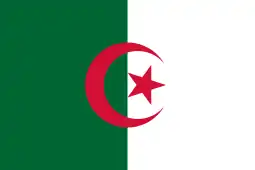 Bank of Algeria**
Bank of Algeria** Central Bank of Argentina*
Central Bank of Argentina*.svg.png.webp) Reserve Bank of Australia*
Reserve Bank of Australia* Oesterreichische Nationalbank**
Oesterreichische Nationalbank**.svg.png.webp) National Bank of Belgium*
National Bank of Belgium*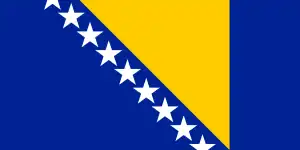 Central Bank of Bosnia and Herzegovina
Central Bank of Bosnia and Herzegovina Central Bank of Brazil*
Central Bank of Brazil*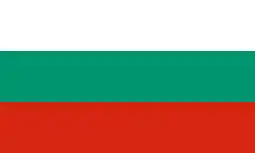 Bulgarian National Bank
Bulgarian National Bank.svg.png.webp) Bank of Canada*
Bank of Canada*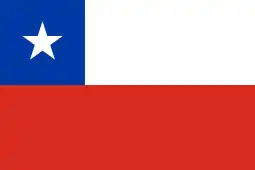 Central Bank of Chile**
Central Bank of Chile** People's Bank of China*
People's Bank of China* Bank of the Republic of Colombia**
Bank of the Republic of Colombia** Croatian National Bank
Croatian National Bank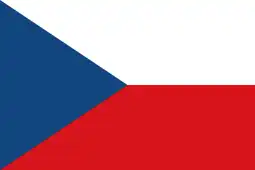 Czech National Bank**
Czech National Bank** Danmarks Nationalbank**
Danmarks Nationalbank** Bank of Estonia
Bank of Estonia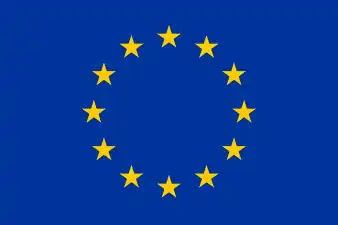 European Central Bank*
European Central Bank* Bank of Finland**
Bank of Finland** Bank of France*
Bank of France* Deutsche Bundesbank*
Deutsche Bundesbank*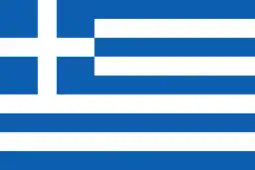 Bank of Greece**
Bank of Greece** Hong Kong Monetary Authority*
Hong Kong Monetary Authority*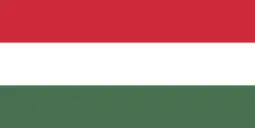 Hungarian National Bank**
Hungarian National Bank**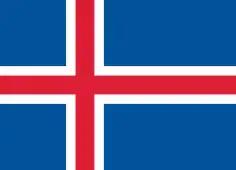 Central Bank of Iceland
Central Bank of Iceland Reserve Bank of India*
Reserve Bank of India*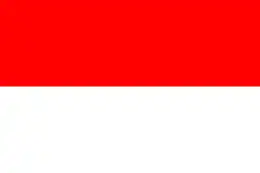 Bank Indonesia*
Bank Indonesia* Central Bank of Ireland**
Central Bank of Ireland** Bank of Israel**
Bank of Israel**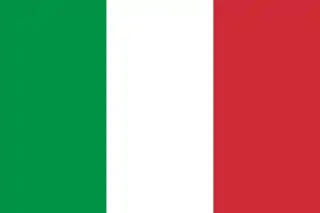 Bank of Italy*
Bank of Italy* Bank of Japan*
Bank of Japan* Bank of Korea*
Bank of Korea*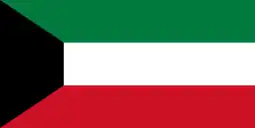 Central Bank of Kuwait**
Central Bank of Kuwait** Bank of Latvia
Bank of Latvia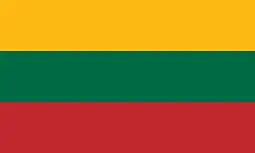 Bank of Lithuania
Bank of Lithuania Central Bank of Luxembourg**
Central Bank of Luxembourg**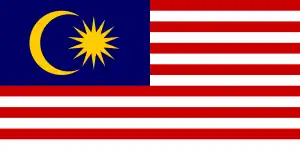 Bank Negara Malaysia*
Bank Negara Malaysia* Bank of Mexico*
Bank of Mexico* Bank Al-Maghrib**
Bank Al-Maghrib**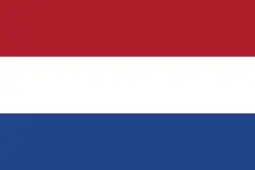 De Nederlandsche Bank*
De Nederlandsche Bank*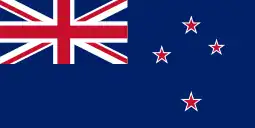 Reserve Bank of New Zealand**
Reserve Bank of New Zealand** National Bank of North Macedonia
National Bank of North Macedonia Norges Bank**
Norges Bank**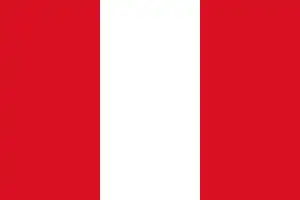 Central Reserve Bank of Peru**
Central Reserve Bank of Peru** Bangko Sentral ng Pilipinas**
Bangko Sentral ng Pilipinas** National Bank of Poland*
National Bank of Poland* Banco de Portugal**
Banco de Portugal** National Bank of Romania**
National Bank of Romania** Central Bank of Russia*
Central Bank of Russia* Saudi Central Bank*
Saudi Central Bank* National Bank of Serbia
National Bank of Serbia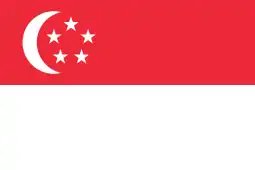 Monetary Authority of Singapore*
Monetary Authority of Singapore* National Bank of Slovakia
National Bank of Slovakia Bank of Slovenia
Bank of Slovenia South African Reserve Bank*
South African Reserve Bank*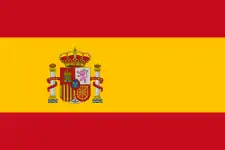 Bank of Spain*
Bank of Spain*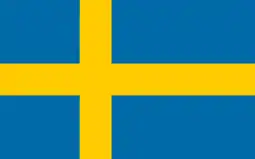 Sveriges Riksbank*
Sveriges Riksbank*.svg.png.webp) Swiss National Bank*
Swiss National Bank*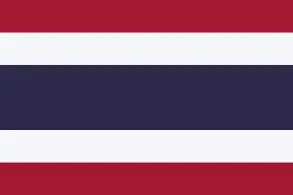 Bank of Thailand*
Bank of Thailand* Central Bank of the Republic of Turkey*
Central Bank of the Republic of Turkey*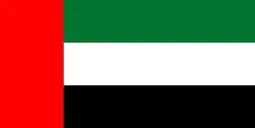 Central Bank of the UAE**
Central Bank of the UAE** Bank of England*
Bank of England* United States Federal Reserve System*
United States Federal Reserve System* Federal Reserve Bank of New York*
Federal Reserve Bank of New York* State Bank of Vietnam**
State Bank of Vietnam**
Role and committees
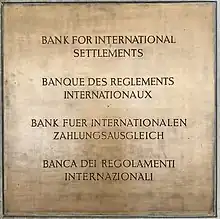
As an organization of central banks, the BIS seeks to make monetary policy more predictable and transparent among its 60-member central banks, except in the case of Eurozone countries which forfeited the right to conduct monetary policy in order to implement the euro. While monetary policy is determined by most sovereign nations, it is subject to central and private banking scrutiny and potentially to speculation that affects foreign exchange rates and especially the fate of export economies. BIS aims to keep monetary policy in line with reality and to help implement monetary reforms in time, preferably as a simultaneous policy among all 60 member banks and also involving the International Monetary Fund.
Central banks do not unilaterally "set" rates, rather they set goals and intervene using their massive financial resources and regulatory powers to achieve monetary targets they set. One reason to coordinate policy closely is to ensure that this does not become too expensive and that opportunities for private arbitrage exploiting shifts in policy or difference in policy, are rare and quickly removed.
The stated mission of the BIS is to serve central banks in their pursuit of monetary and financial stability, to foster international cooperation in those areas and to act as a bank for central banks. The BIS pursues its mission by:
- fostering discussion and facilitating collaboration among central banks;
- supporting dialogue with other authorities that are responsible for promoting financial stability;
- carrying out research and policy analysis on issues of relevance for monetary and financial stability;
- acting as a prime counterparty for central banks in their financial transactions; and
- serving as an agent or trustee in connection with international financial operations.
The role that the BIS plays today goes beyond its historical role. The original goal of the BIS was "to promote the co-operation of central banks and to provide additional facilities for international financial operations; and to act as trustee or agent in regard to international financial settlements entrusted to it under agreements with the parties concerned", as stated in its Statutes of 1930.[26]
Global Economy Meeting
The Global Economy Meeting has been held every other month since 1998, generally in Basel, and serves a major role in the global central banking community. It typically happens on a Monday morning and is preceded by a meeting of the Economic Coordination Committee on Sunday. With the suspension of Russia since March 2022, 30 jurisdictions are members of the GEM and an additional 22 participate as observers (see membership list above).
Basel Committee on Banking Supervision
| Basel Framework International regulatory standards for banks |
|---|
| Background |
| Pillar 1: Regulatory capital |
| Pillar 2: Supervisory review |
| Pillar 3: Market disclosure |
| Business and Economics Portal |
The BIS hosts the Secretariat of the Basel Committee on Banking Supervision (BCBS), colloquially referred to simply as the "Basel Committee", and with it has played a central role in establishing the Basel Capital Accords (now commonly referred to as Basel I) of 1988, Basel II framework in 2004 and more recently Basel III framework in 2010-2017.
Capital adequacy policy applies to equity and capital assets. These can be overvalued in many circumstances because they do not always reflect current market conditions or adequately assess the risk of every trading position. Accordingly, the Basel standards require the capital adequacy ratio of internationally active commercial banks to be above a prescribed minimum international standard, to improve the resilience of the banking sector.
Committee on the Global Financial System
The Committee on the Global Financial System (CGFS) was established in 1971 as the Euro-currency Standing Committee, and adopted its current name in 1999. It reports to the Global Economy Meeting.
As of 2023, it had 28 members: Central Bank of Argentina, Reserve Bank of Australia, National Bank of Belgium, Central Bank of Brazil, Bank of Canada, People's Bank of China, European Central Bank, Bank of France, Deutsche Bundesbank, Hong Kong Monetary Authority, Reserve Bank of India, Bank of Italy, Bank of Japan, Bank of Korea, Central Bank of Luxembourg, Bank of Mexico, De Nederlandsche Bank, Central Bank of Russia, Saudi Central Bank, Monetary Authority of Singapore, South African Reserve Bank, Bank of Spain, Sveriges Riksbank, Swiss National Bank, Bank of Thailand, Bank of England, Board of Governors of the Federal Reserve System, and Federal Reserve Bank of New York.
Markets Committee
The Markets Committee is the oldest of the BIS-hosted committees, originally established in 1962 as the Committee on Gold and Foreign Exchange. It also reports to the Global Economy Meeting.
As of 2023, it had 27 members: Reserve Bank of Australia, National Bank of Belgium, Central Bank of Brazil, Bank of Canada, People's Bank of China, European Central Bank, Bank of France, Deutsche Bundesbank, Hong Kong Monetary Authority, Reserve Bank of India, Bank of Indonesia, Bank of Italy, Bank of Japan, Bank of Korea, Central Bank of Malaysia, Bank of Mexico, De Nederlandsche Bank, Central Bank of Russia, Monetary Authority of Singapore, South African Reserve Bank, Bank of Spain, Sveriges Riksbank, Swiss National Bank, Central Bank of the Republic of Türkiye, Bank of England, Board of Governors of the Federal Reserve System, and Federal Reserve Bank of New York.
Committee on Payments and Market Infrastructure
Another of the committees hosted at the BIS is the Committee on Payments and Market Infrastructures (CPMI). The Committee on Payment and Settlement Systems (CPSS) was established in 1990 and extended the prior work of the Group of Experts on Payment Systems (1980) and Committee on Interbank Netting Schemes (1989), and was in turn renamed to CPMI in 2014. Its membership was extended in 1997-98, 2009, and 2018 to reach the following 28 members: Central Bank of Argentina, Reserve Bank of Australia, National Bank of Belgium, Central Bank of Brazil, Bank of Canada, People's Bank of China, European Central Bank, Bank of France, Deutsche Bundesbank, Hong Kong Monetary Authority, Reserve Bank of India, Bank Indonesia, Bank of Italy, Bank of Japan, Bank of Korea, Bank of Mexico, De Nederlandsche Bank, Central Bank of Russia, Saudi Central Bank, Monetary Authority of Singapore, South African Reserve Bank, Bank of Spain, Sveriges Riksbank, Swiss National Bank, Central Bank of the Republic of Türkiye, Bank of England, the Board of Governors of the Federal Reserve System and Federal Reserve Bank of New York.
One of the Group's first projects, a detailed review of payment system developments in the G10 countries, was published by the BIS in 1985 in the first of a series that has become known as "Red Books". Currently, the red books cover countries participating in the CPMI.[27] A sample of statistical data in the red books appears in the table below, where local currency is converted to US dollars using end-of-year rates.[28]
| Per Capita | Area | Billions of Dollars |
|---|---|---|
| $10,194 | Switzerland | $87 |
| $8,471 | Hong Kong SAR | $63 |
| $8,290 | Japan | $1,048 |
| $6,378 | Singapore | $36 |
| $5,238 | United States | $1,719 |
| $4,230 | Eurozone | $1,446 |
| $2,404 | Australia | $60 |
| $2,003 | Korea | $103 |
| $1,924 | Canada | $71 |
| $1,683 | Saudi Arabia | $56 |
| $1,417 | United Kingdom | $94 |
| $1,009 | Russia | $148 |
| $825 | China | $1,151 |
| $682 | Sweden | $7 |
| $680 | Mexico | $85 |
| $513 | Argentina | $23 |
| $327 | Brazil | $68 |
| $311 | Turkey | $26 |
| $230 | India | $307 |
| $205 | South Africa | $12 |
| $196 | Indonesia | $52 |
Irving Fisher Committee
The Irving Fisher Committee on Central Bank Statistics gathers 100 members, mostly national central banks as well as a few regional organizations such as the Center for Latin American Monetary Studies (CEMLA), Central American Monetary Council, and South East Asian Central Banks Centre (SEACEN). It is led by an 11-member executive elected by its members.
Reserve policy is also important, especially to consumers and the domestic economy. To ensure liquidity and limit liability to the larger economy, banks cannot create money in specific industries or regions without limit. To make bank depositing and borrowing safer for customers and reduce the risk of bank runs, banks are required to set aside or "reserve".
Reserve policy is harder to standardize, as it depends on local conditions and is often fine-tuned to make industry-specific or region-specific changes, especially within large developing nations. For instance, the People's Bank of China requires urban banks to hold 7% reserves while letting rural banks continue to hold only 6%, and simultaneously telling all banks that reserve requirements on certain overheated industries would rise sharply or penalties would be laid if investments in them did not stop completely. The PBoC is thus unusual in acting as a national bank, focused on the country and not on the currency, but its desire to control asset inflation is increasingly shared among BIS members who fear "bubbles", and among exporting countries that find it difficult to manage the diverse requirements of the domestic economy, especially rural agriculture, and an export economy, especially in manufactured goods.
Effectively, the PBoC sets different reserve levels for domestic and export styles of development. Historically, the United States also did this, by dividing federal monetary management into nine regions, in which the less-developed western United States had looser policies.
For various reasons, it has become quite difficult to accurately assess reserves on more than simple loan instruments, and this plus the regional differences has tended to discourage standardizing any reserve rules at the global BIS scale. Historically, the BIS did set some standards which favoured lending money to private landowners (at about 5 to 1) and for-profit corporations (at about 2 to 1) over loans to individuals. These distinctions reflecting classical economics were superseded by policies relying on undifferentiated market values – more in line with neoclassical economics.
Financial Stability Institute
The Financial Stability Institute is dedicated to debates and exchanges of practices among supervisors and financial stability policymakers. It was established in 1999 in the wake of the 1997 Asian financial crisis. It has been led by Josef Tošovský from December 2000 to December 2016, and by Fernando Restoy since January 2017.
Other associations hosted by the BIS
The BIS hosts the secretariats of the Financial Stability Board, the International Association of Insurance Supervisors, and International Association of Deposit Insurers. These entities, unlike the above listed committees, have no direct reporting links to the BIS.
Financial results
BIS denominates its reserve in IMF special drawing rights. The balance sheet total of the BIS on 31 March 2019 was SDR 291.1 billion (US$403.7 billion) and a net profit of SDR 461.1 million (US$639.5 million).[29]
Leadership
The chairs concurrently held the role of president from April 1930 to May 1937. Johan Beyen of the Netherlands served as president from May 1937 to December 1939, succeeded by American national Thomas H. McKittrick from January 1940 to June 1946. The position of president remained vacant from June 1946 to June 1948, when the roles of president and chair of the Board were again reunited until the former was abolished on 27 June 2005. Meanwhile, the chair had been left vacant from May 1940 to December 1942.
BIS Chairs
| Chair | Nationality | Dates |
|---|---|---|
| Gates McGarrah | April 1930 – May 1933 | |
| Leon Fraser | May 1933 – May 1935 | |
| Leonardus Trip | May 1935 – May 1937 | |
| Otto Niemeyer | May 1937 – May 1940 | |
| Ernst Weber | December 1942 – November 1945 | |
| Maurice Frère | July 1946 – June 1958 | |
| Marius Holtrop | July 1958 – June 1967 | |
| Jelle Zijlstra | July 1967 – December 1981 | |
| Fritz Leutwiler | January 1982 – December 1984 | |
| Jean Godeaux | January 1985 – December 1987 | |
| Wim Duisenberg | January 1988 – December 1990 | |
| Bengt Dennis | January 1991 – December 1993 | |
| Wim Duisenberg | January 1994 – June 1997 | |
| Alfons Verplaetse | July 1997 – February 1999 | |
| Urban Bäckström | March 1999 – February 2002 | |
| Nout Wellink | March 2002 – February 2006 | |
| Jean-Pierre Roth | March 2006 – February 2009 | |
| Guillermo Ortiz | March 2009 – December 2009 | |
| Christian Noyer | March 2010 – October 2015 | |
| Jens Weidmann | November 2015 – December 2021 | |
| François Villeroy de Galhau | January 2022 – present |
BIS General Managers
| General Manager | Nationality | Dates |
|---|---|---|
| Pierre Quesnay | April 1930 – September 1937 | |
| Roger Auboin | January 1938 – September 1958 | |
| Guillaume Guindey | October 1958 – March 1963 | |
| Gabriel Ferras | April 1963 – December 1970 | |
| René Larre | March 1971 – February 1981 | |
| Gunther Schleiminger | March 1981 – April 1985 | |
| Alexandre Lamfalussy | May 1985 – December 1993 | |
| Andrew Crockett | January 1994 – March 2003 | |
| Malcolm Knight | April 2003 – September 2008 | |
| Jaime Caruana | April 2009 – November 2017 | |
| Agustín Carstens | December 2017 – present |
Board of directors
As of May 2023:
- Andrew Bailey (Bank of England)
- Roberto Campos Neto (Central Bank of Brazil)
- Shaktikanta Das (Reserve Bank of India)
- Thomas Jordan (Swiss National Bank)
- Klaas Knot (De Nederlandsche Bank)
- Christine Lagarde (European Central Bank)
- Tiff Macklem (Bank of Canada)
- Joachim Nagel (Deutsche Bundesbank)
- Jerome H. Powell (Federal Reserve Bank)
- Rhee Chang-yong (Bank of Korea)
- Victoria Rodríguez Ceja (Bank of Mexico)
- Erik Thedéen (Sveriges Riksbank)
- Kazuo Ueda (Bank of Japan)
- François Villeroy de Galhau (Bank of France), Chairman
- Ignazio Visco (Bank of Italy)
- John C. Williams (Federal Reserve Bank of New York)
- Pierre Wunsch (National Bank of Belgium)
- Yi Gang (People's Bank of China)
See also
References
- "Board of Directors". www.bis.org/. Archived from the original on 22 April 2011. Retrieved 2011-04-14.
- "About BIS". www.bis.org. 2005-01-01. Retrieved 2016-03-17.
- "About BIS". Web page of Bank for International Settlements. January 2005. Archived from the original on 14 May 2008. Retrieved May 17, 2008.
- Wintermeyer, Lawrence. "BIS Innovation Hub Sets The Pace For Central Banking Digital Innovation". Forbes. Retrieved 2023-10-11.
- "About the BIS Innovation Hub". 2021-01-27.
{{cite journal}}: Cite journal requires|journal=(help) - Frank Costigliola (December 1972). "The Other Side of Isolationism: The Establishment of the First World Bank, 1929–1930". Journal of American History. 59 (3): 602–620. doi:10.2307/1900660. JSTOR 1900660.
- BIS History – Overview. BIS website. Retrieved 2011-02-13.
- "UNTC". treaties.un.org.
- "About the BIS – overview". www.bis.org. 1 January 2005.
- "Protocol regarding the immunities of the Bank for International Settlements" (PDF). Archived (PDF) from the original on 2022-10-09.
- "Note on gold shipments and gold exchanges organized by the Bank for International Settlements, 1st June 1938 – 31st May 1945". www.bis.org. 1 September 1997.
- Kubu, E. (1998). "Czechoslovak gold reserves and their surrender to Nazi Germany" In Nazi Gold, The London Conference. London: The Stationery Office, pp. 245–48.
- Toniolo, G., Central Bank Cooperation at the Bank for International Settlements, 1930-1973 (Cambridge: Cambridge University Press: 2005), pp. 245–252.
- Higham, Charles (1995). Trading with the Enemy: The Nazi-American Money Plot, 1933–1949. Barnes & Noble. ISBN 9780760700099.
- United Nations Monetary and Financial Conference, Final Act, Article IV. London, 1944.
- Raymond Frech Mikesell. The Bretton Woods Debates: A Memoir. Princeton: International Finance Section, Dept. of Economics, Princeton University. p. 42. ISBN 0-88165-099-4. Retrieved 8 July 2013. Essays in International Finance 192 brief history of the BIS
- "History – the BIS during the Second World War (1939–48)". Bank for International Settlements. October 14, 2014.
- Kaplan, J. J. and Schleiminger, G. (1989). The European Payments Union: Financial Diplomacy in the 1950s. Oxford: Clarendon Press.
- Toniolo, G., Central Bank Cooperation at the Bank for International Settlements, 1930–1973 (Cambridge: Cambridge University Press: 2005), p. 416.
- James, H. (2012). Making the European Monetary Union, The Role of the Committee of Central Bank Governors and the Origins of the European Central Bank. Cambridge-London: The Belknap Press of Harvard University Press
- "Press release: BIS completes redistribution of shares". www.bis.org. 1 June 2005.
- "Products and services". www.bis.org. 21 January 2003.
- "IMF approves $1.4 billion Ukraine aid and BIS suspends Russia". Central Banking. March 10, 2022.
- Jones, M., "Bank for International Settlements sees first expansion since 2011", Reuters, January 14, 2020.
- "BIS member central banks". Oct 13, 2014. Retrieved Mar 19, 2023 – via www.bis.org.
- Bank for International Settlements, Statutes, 20 January 1930 (text amended 7 November 2016).
- "About the CPMI". www.bis.org. 2 February 2016.
- "BIS Statistics Explorer: Table CT2". stats.bis.org.
- BIS, "Time to ignite all engines, BIS says in its Annual Economic Report", 30 June 2019.
External links
- Official website
- "They've Got a Secret" by Michael Hirsh, The New York Times, 2013 (a book review of Tower of Basel, Adam LeBor, 2014)
- "The Money Club", by Edward Jay Epstein, Harper's, 1983.
- Andrew Crockett statement to the IMF
- An account of the use of reserve policy and other central bank powers in China at the Wayback Machine (archived February 4, 2012), by Henry C K Liu in the Asia Times.
- Banking with Hitler on YouTube, Timewatch, Paul Elston, producer Laurence Rees, narrator Sean Barrett (UK), BBC, 1998 (a video documentary about the BIS role in financing Nazi Germany)
- eabh (The European Association for Banking and Financial History e.V.)
- Bank for International Settlements in the Dodis database of the Diplomatic Documents of Switzerland
- Documents and clippings about Bank for International Settlements in the 20th Century Press Archives of the ZBW

